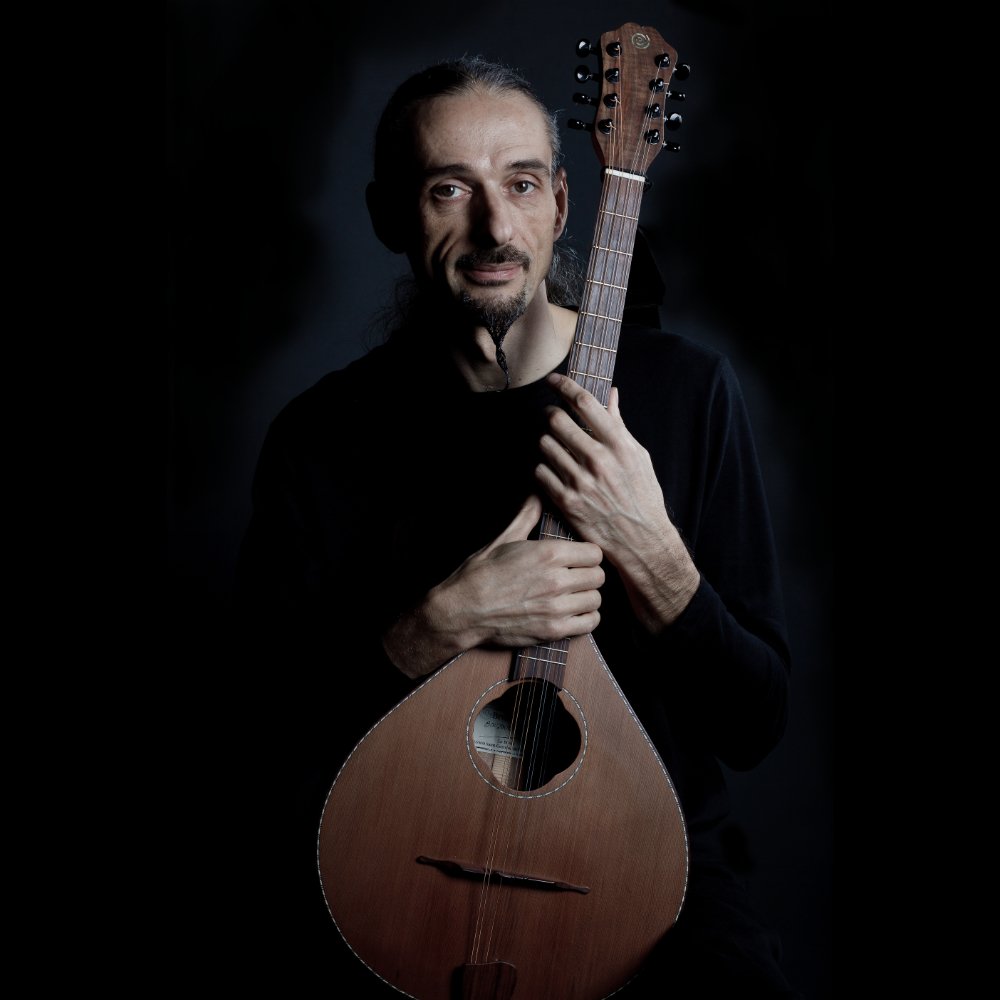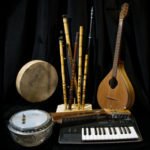
I discovered the bouzouki by chance at a friend’s luthier workshop. The one I play has a flat back and is of the Irish type, but I play many different styles of music with it. I was fascinated by the ample and rich sound of the double metal strings. This instrument fit perfectly into my band at the time, Passe Montagne, a trio of French folk music with a violin and a diatonic accordion.
I quickly found the tuning that suited me best (A-E-A-D), a non-standard compromise between the guitar’s fourths but with the low string tuned a tone lower, allowing me to be comfortable with both melodies and chords. I haven’t changed it in over 30 years.
This same bouzouki has accompanied me through various musical periods in my life: in traditional Occitan music (Delphine Aguilera, Hombeline), oriental music (Pêcheurs de Perles, Moneim Adwan, Françoise Atlan), Balkan music (Balkanic Trio, Maritsa), in the Cirque du Soleil’s Zaia show in China, and in numerous creations and recordings.

The story of the Irish bouzouki is unique. Irish musicians adopted the Greek bouzouki in the 1960s. Popularized by the band Planxty, it has since become a traditional instrument in Irish music with some modifications, spreading across Europe to other traditional music groups like in Galicia (Spain) or Sweden, while retaining its original Greek name.
It’s no coincidence that I play an instrument that has traveled between cultures, as I draw from many different traditional musics to find my own expression. I still have and play my first bouzouki, which has as many qualities as flaws… but it has a particularly warm sound that I haven’t found elsewhere.
Since then, I’ve had others made, including a smaller one, higher by a fifth, which I call Mandole. I delight in its much more crystalline sound.

For accompaniment, the guitar offers much greater harmonic possibilities. With the bouzouki, I’ve learned to stick to the essentials. I’ve adopted a minimalist style, relying on tonics and fifths, reducing the use of thirds to a strict minimum, mixing chords and bits of melodies (counter-melodies, canons…).
I like to highlight a melody (sung or instrumental) in a creative, evolving way. When I play in a group, my listening is not that of an instrumentalist but that of an arranger. I get this from my father.
